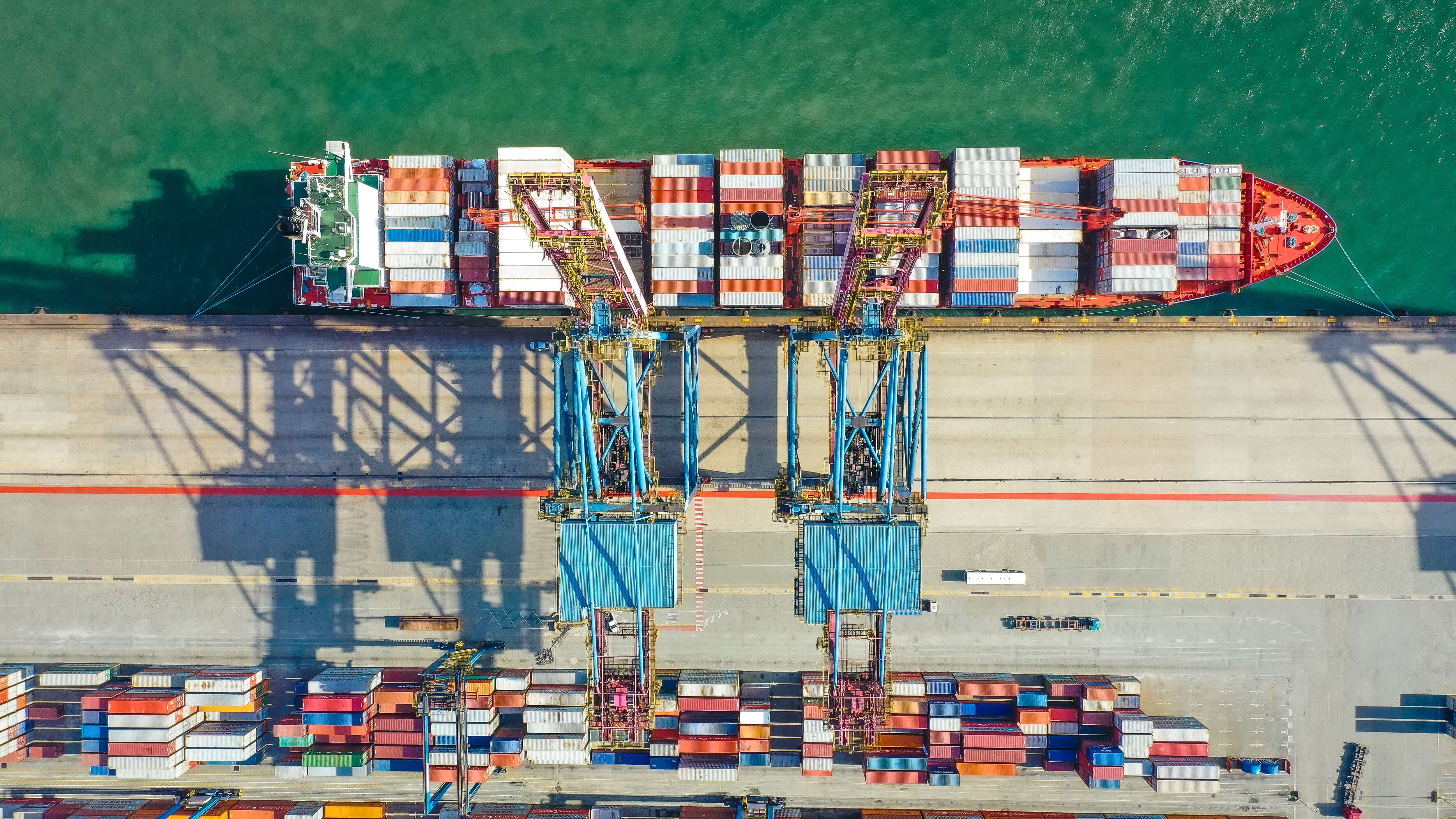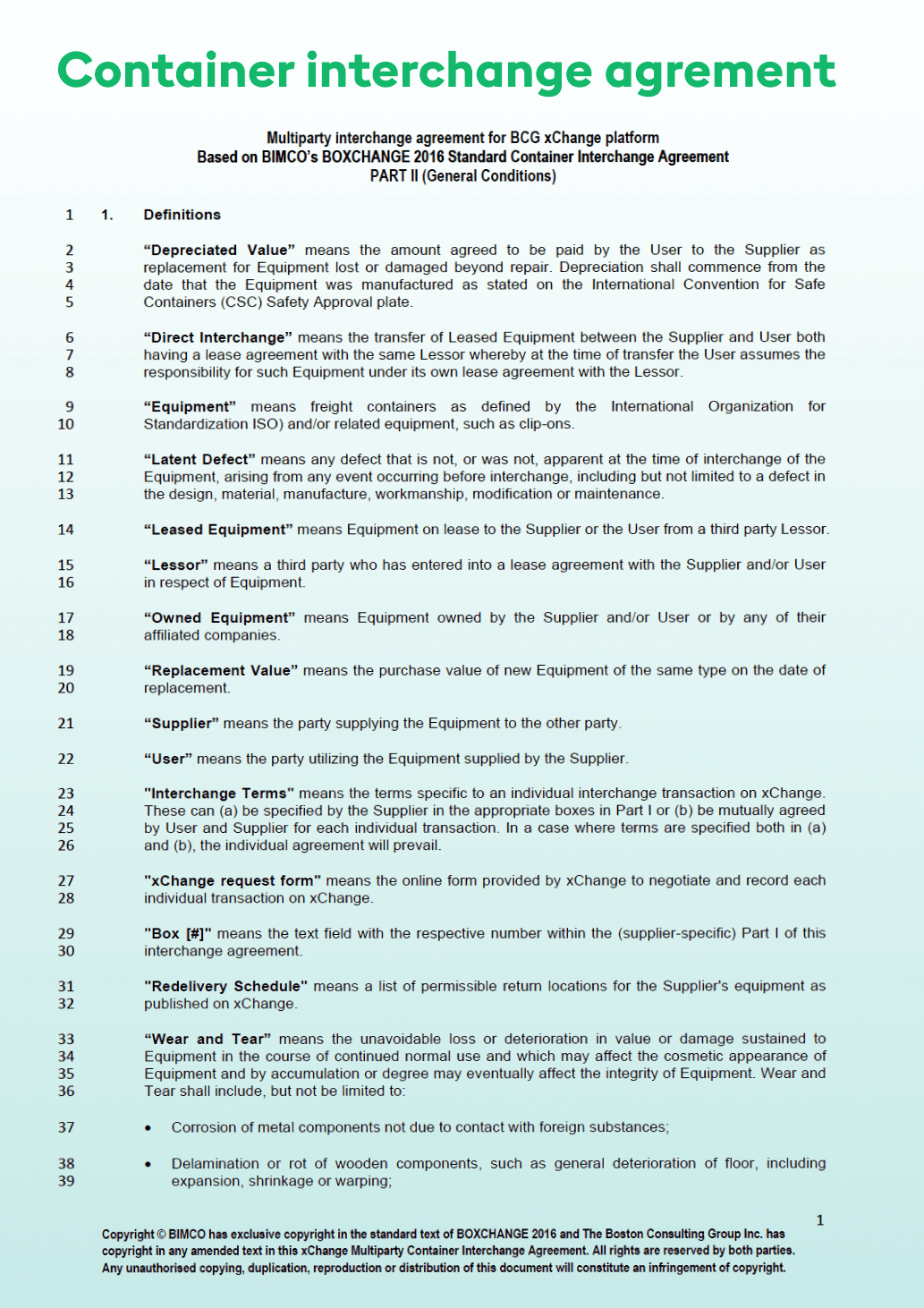Container interchange is an important part of the shipping industry. Find out how it can help your business and what are the legal aspects of an interchange on this blog. Also, get to know how Container xChange can help you ease the burden of finding container interchange partnerships. And reduce repositioning costs.
To get into the depths of container interchange we need to first introduce you to a problem that plagues the container logistics industry. Empty container repositioning. Container imbalances are the result of trade imbalances and carrier-specific inefficiencies. The estimate of this disparity costs $20 billion globally!
Now to reduce the cost of repositioning empty containers, many carriers can use interchange containers and reduce repositioning costs. But how does that work? A container interchange is nothing but an agreement that gives in-depth details about the boxes being interchanged between two parties. In more detailed terms, it’s an agreement/contract which governs the interchange of intermodal containers between ocean carriers, leasing companies, and trucking companies.
If you’re curious to know how this agreement can help resolve the difficult problems of repositioning, read our section below.
How container interchange helps you reposition empties better?
Often shipping lines encounter a surplus of containers in a given location. Therefore, they arrange a container interchange agreement with another carrier. This carrier moves the empty containers to a location that has a deficit of containers. And thus resolves the issue of repositioning. It’s as simple as that.
You can save big bucks on this never-ending problem with Container xChange.
Interchange Container: The Container xChange approach and how it helps
Sourcing partners for a container interchange can be difficult because of the lack of transparency in the market. The process usually starts with you searching for new partners in your network. Or on social media networks such as LinkedIn and Google. It can take weeks to find the right contact person, and vetted partners.
Container interchanges are made to reduce container repositioning costs. But the long process of finding new partners quickly kills profit margins. That’s why most shipping lines or container owners only have a few container interchange agreements in place.
But there is a solution that makes container interchange more attractive for companies such as yourself. And that’s Container xChange.
With our online platform, we connect container users and owners to help them find SOC containers and identify partners for repositioning. That’s basically an interchange from two different perspectives. Through our efficient online workflow, it’s now easy to find new partners and make deals. The platform takes care of the time-consuming operational handling in a container interchange for you.
And in terms of safety, we have 1500+ vetted suppliers on our platform. There’s a mandatory vetting process that every member goes through before they become a member of the platform, ensuring you only deal with certified members. You can also view performance reviews and partner ratings on their company profile to cheery pick whom you feel comfortable working with. You can then communicate with them on our platform via calls or chats directly without a middleman.
Also, speaking of empty container repositioning we want to tell you about another way you can solve that issue on our platform.
Curb empty container repositioning with one-way leasing on Container xChange
With one-way leasing on our platform, you lease your box for one journey, without incurring the costs of empty container repositioning and other port surcharges.
For example, from Antwerp to Moscow. Your company leases the shipping container for that one journey. This way you move the box from an area of surplus to an area where there is a deficit. And once the cargo has been dropped off, you can sell the container again on our platform at a good price and help in repositioning them – it’s a two-way problem solver that we have for you!
If you’re worried about prices, don’t be. We offer full market price transparency, so you can lease your boxes at reasonable rates. Here you can compare and negotiate prices with vetted suppliers and select the offer that suits you the best. With us, you also get competitive rates for leasing with zero hidden fees – you won’t find deals like this on your other sourcing channels where you get to pay exactly what you want.
|
Join our platform today and save money on empty container repositioning with vetted suppliers for container interchange and one-way leasing at inexpensive rates. You’ll also have 10,000+ containers to choose from in 2,500 locations worldwide. Get started with a free tour of our marketplace and see it in action. Our team of experts will help you seal the best first deal. |
What is a container interchange report?
You already know what a container interchange agreement is. Now, a container interchange report, however, is a completely different document and it is not to be confused with the agreement.
A report is a written account of the external state of a container when it is transferred from one party to another. By creating an interchange report for each transfer, it’s possible to determine when damage to a container took place and who had custody of the container during that time.
Hence, a report is used as a means to understand which of the two parties was responsible for any damage caused to the container and be held liable for it.
As you can already tell with this much scrutiny over the conditions of the container, this interchange agreement comes with a host of legal implications. We are going to explore this further.
Who is responsible for legal liability of a container?
Before signing the interchange document, you need to understand the legal liability that comes with it while you’re in possession of the unit. You must keep in mind that if the container is damaged in any way (dents, scrapes or punctures, etc) while it’s in your possession, you have to pay the container owner for the damage claims. If the cargo is damaged, you must pay the cargo owner the damage claims.
For example, say you’ve leased a container from a leasing company to transport your goods in and have signed the interchange agreement. If the container gets damaged during transit in any way you’ll have to pay for the damages.
Similarly, say your client needs you to send out a shipment of their most expensive collection of wine. If the wine bottles break during their long journey to the destination, you’ll be responsible for paying for the damages to your client.
Before the interchange report is carried out a survey is undertaken by a surveyor. After which the owner of the damaged cargo (your client) and the owner of the container (the leasing company), will submit a damage claim invoice to you for the damages.
This is where our insurance coverage and damage claims can help you. If you want to know about them in detail, read our separate blog here.
Container interchange agreement
So far you’ve learned quite a bit about the container interchange agreement, the report, and ways to curb repositioning costs. We want to now show you a mock-up interchange agreement so you can have an idea of what is enclosed in it. Have a look at the image below.
Please note this is not the entire agreement just a part of it to be considered only for reference.
Reduce repositioning costs with container interchange on Container xChange
Now that you’ve made it to the very end and understood all about container interchange it’s time to take action to cut costs on repositioning. And you can do that in just a few steps on xChange:
- Key in your pick-up and drop-off locations and the container type for your one-way move.
- Choose from a list of offers from vetted suppliers under one dashboard.
- Compare these offers and pick a deal that works for you. And directly reach out to your chosen supplier and iron out any questions and doubts.
- Once you have chosen a deal, negotiate directly with the supplier, source your one-way container, and sign the container interchange agreement.
Also, thanks to our near-real-time tracking feature, you get accurate ETA’s and know the exact whereabouts of your container throughout the transit. You can also keep your transactions 100% safe and under one platform with the xChange Wallet. It only sends you one consolidated bill each month, so you don’t have to deal with different companies and country regulations. And keeps your entire transaction history safe.
It’s time to say goodbye to lengthy contract negotiations, background checks, and endless emails. Get your container interchange agreement ready without delays and back-and-forth interactions and alterations.
|
Ready to explore the smoothest and fastest digital platform for your shipping logistics business? Hop onboard our platform and do your bit to control empty container repositioning and save your money with one-way leasing and container interchange. |
Container interchange: Common FAQs
What is an interchange report?
An interchange report is a written account of the external state of a container when it is transferred from one party to another. It’s possible to determine when damage to a container has taken place and hold the person that had custody of the container during that time liable by creating an interchange report for each transfer.
What is a container interchange receipt?
The Equipment Interchange Receipt, also known as the Container Interchange Receipt (CIR) is a form that is generated every time a container goes from one interchange point to another. The interchange points could be two container ships, terminals, container yards, or at any intermodal interchange point.
How many types of export containers are there?
There are many types of containers, such as standard dry containers, open-top containers, high cube containers, side-door containers, refrigerated containers, and more.




